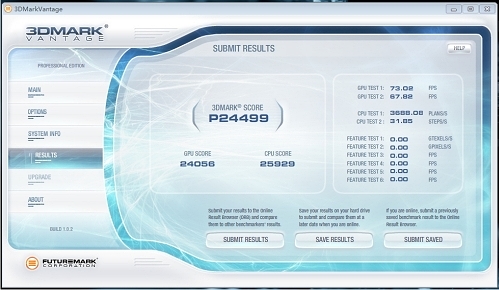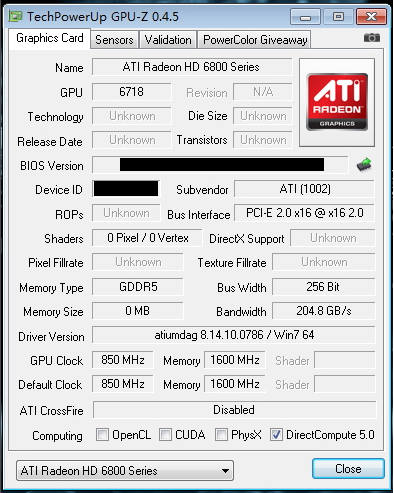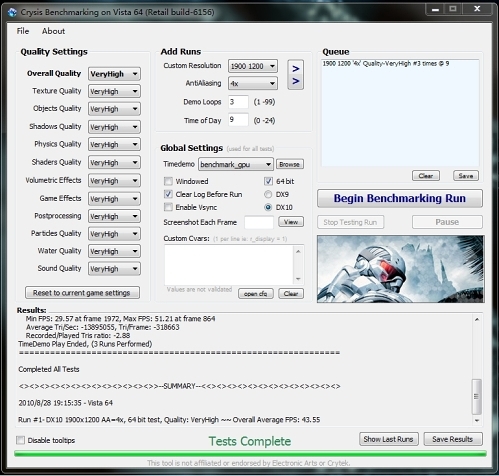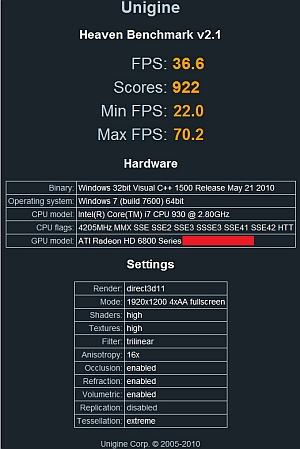
Radeon HD 6800 Series (Cayman XT) 3DMark Vantage Extreme Test 1

Radeon HD 6800 Series (Cayman XT) 3DMark Vantage Extreme Test 2

Radeon HD 6800 Series (Cayman XT) 3DMark Vantage Performance Test 3
WG_Baby did not provide any system specifications associated with the 3DMark Vantage Extreme overall score. However, several analysts concur that an Intel Core i7 processor must have been used as a result of the high CPU subscore. Nevertheless, if the GPU managed to subscore X11634 on the first run, X11762 on the second run and P24056 on the third run with default clocks, this would seem to indicate that Cayman XT may become the fastest single-GPU card to launch on the market. The only exception in its path would be the Radeon HD 5970 dual-GPU, which will eventually be succeeded by Antilles XT.

The accompanying GPU-Z 0.4.5 information reveals "6718" as the GPU ID, along with an 850MHz core clock and 1600MHz memory clock comprised of 256-bit GDDR5 with 204.8GB/s memory bandwidth. According to the Southern Islands codenames leaked in Catalyst 10.8 last week, the GPU ID matches as "233, Cayman XT (6718) NI."
As VR-Zone mentioned last Thursday, many of the codenames for AMD's next generation Radeon cards refer to West Indies islands located in the Carribbean. Based on their respective geographic regions, the Greater Antilles region of the West Indies comprises the Cayman Islands because of their geographical proximity to Cuba. In contrast, the Lesser Antilles region comprises St. Barts, Turks Caicos, and Seymour islands. If we can accurately map these anecdotal references into AMD's codename strategy, we can logically infer that Cayman GL XT, Cayman GL Pro, Cayman GL, Cayman GL LE, Cayman XT, Cayman Pro, Antilles Pro and Antilles XT all belong to the Northern Islands GPU family. Nevertheless, the codename mixup between Southern Islands and Northern Islands graphics card families remains inconclusive for now.
We are also aware of the fact that the "ATI" brand name appears in the GPU-Z Name information box, despite AMD's intentions to retire the brand later this year in order to make way for its Fusion marketing agenda. Although this reference may be attributed to the way GPU-Z has been programmed, perhaps this next-generation consumer desktop GPU family will become the last to feature the proud "ATI Radeon HD 6000 Series" title before DAAMIT tosses "ATI" from its brand image entirely. The outcome remains in question until more information behind the company's Q4 launch schedule is revealed.
Update: In addition to the obligatory 3DMark Vantage tests, WG_Baby recently updated his findings to include Crysis (2007) and Unigine Heaven 2.1 benchmarks. The results show that the Cayman XT graphics card and currently unknown hardware combination can render the original Crysis at an overall average 43.55 frames per second on Very High settings at 1920x1200 with 4x AA in DirectX 10 64-bit mode (which shouldn't have been used, as Crysis 64-bit mode is known to lower framerates by an average of 5fps with no performance advantages over 32-bit mode).

Additionally, the Unigine Heaven 2.1 benchmark test was run at 1920x1200 fullscreen resolution with 4x AA, 16x AF and Extreme Tessellation enabled. The results show that the Cayman XT gets 922 Scores with an average 36.6 frames per second.


